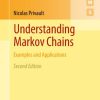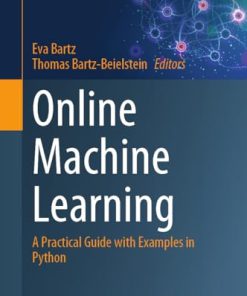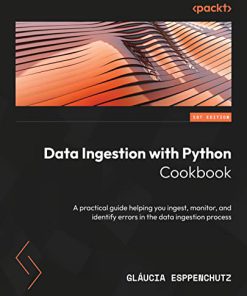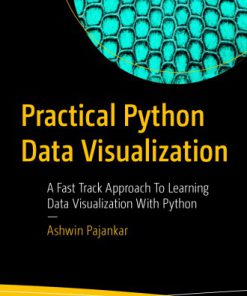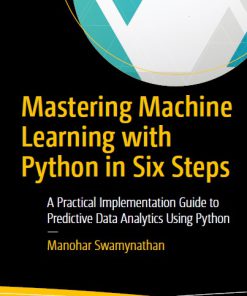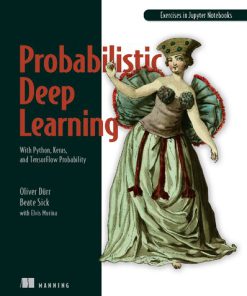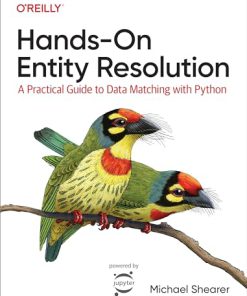Bayesian Analysis with Python A practical guide to probabilistic modeling 1st edition by Osvaldo 1805125419 9781805125419
$50.00 Original price was: $50.00.$25.00Current price is: $25.00.
Bayesian Analysis with Python A practical guide to probabilistic modeling 1st edition by Osvaldo Martin – Ebook Instant Download/Delivery ISBN(s): 1805125419, 9781805125419
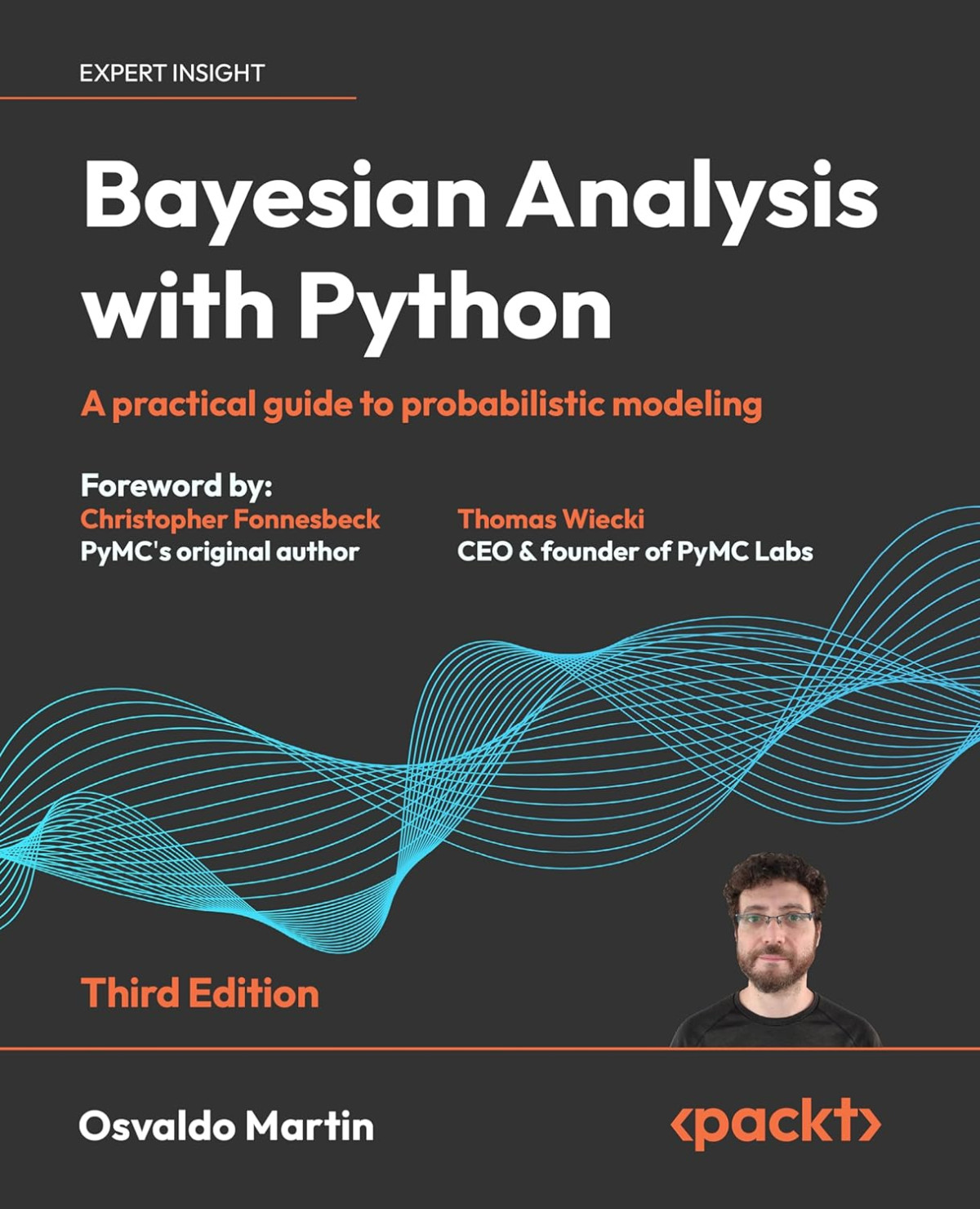
Product details:
- ISBN 10: 1805125419
- ISBN 13: 9781805125419
- Author: Osvaldo Martin
The third edition of Bayesian Analysis with Python serves as an introduction to the main concepts of applied Bayesian modeling using PyMC, a state-of-the-art probabilistic programming library, and other libraries that support and facilitate modeling like ArviZ, for exploratory analysis of Bayesian models; Bambi, for flexible and easy hierarchical linear modeling; PreliZ, for prior elicitation; PyMC-BART, for flexible non-parametric regression; and Kulprit, for variable selection. In this updated edition, a brief and conceptual introduction to probability theory enhances your learning journey by introducing new topics like Bayesian additive regression trees (BART), featuring updated examples. Refined explanations, informed by feedback and experience from previous editions, underscore the book’s emphasis on Bayesian statistics.
Table of contents:
Chapter 1 Thinking Probabilistically
1.1 Statistics, models, and this book’s approach
1.2 Working with data
1.3 Bayesian modeling
1.4 A probability primer for Bayesian practitioners
1.5 Interpreting probabilities
1.6 Probabilities, uncertainty, and logic
1.7 Single-parameter inference
1.8 How to choose priors
1.9 Communicating a Bayesian analysis
1.10 Summary
1.11 Exercises
Join our community Discord space
Chapter 2 Programming Probabilistically
2.1 Probabilistic programming
2.2 Summarizing the posterior
2.3 Posterior-based decisions
2.4 Gaussians all the way down
2.5 Posterior predictive checks
2.6 Robust inferences
2.7 InferenceData
2.8 Groups comparison
2.9 Summary
2.10 Exercises
Join our community Discord space
Chapter 3 Hierarchical Models
3.1 Sharing information, sharing priors
3.2 Hierarchical shifts
3.3 Water quality
3.4 Shrinkage
3.5 Hierarchies all the way up
3.6 Summary
3.7 Exercises
Join our community Discord space
Chapter 4 Modeling with Lines
4.1 Simple linear regression
4.2 Linear bikes
4.3 Generalizing the linear model
4.4 Counting bikes
4.5 Robust regression
4.6 Logistic regression
4.7 Variable variance
4.8 Hierarchical linear regression
4.9 Multiple linear regression
4.10 Summary
4.11 Exercises
Join our community Discord space
Chapter 5 Comparing Models
5.1 Posterior predictive checks
5.2 The balance between simplicity and accuracy
5.3 Measures of predictive accuracy
5.4 Calculating predictive accuracy with ArviZ
5.5 Model averaging
5.6 Bayes factors
5.7 Bayes factors and inference
5.8 Regularizing priors
5.9 Summary
5.10 Exercises
Join our community Discord space
Chapter 6 Modeling with Bambi
6.1 One syntax to rule them all
6.2 The bikes model, Bambi’s version
6.3 Polynomial regression
6.4 Splines
6.5 Distributional models
6.6 Categorical predictors
6.7 Interactions
6.8 Interpreting models with Bambi
6.9 Variable selection
6.10 Summary
6.11 Exercises
Join our community Discord space
Chapter 7 Mixture Models
7.1 Understanding mixture models
7.2 Finite mixture models
7.3 The non-identifiability of mixture models
7.4 How to choose K
7.5 Zero-Inflated and hurdle models
7.6 Mixture models and clustering
7.7 Non-finite mixture model
7.8 Continuous mixtures
7.9 Summary
7.10 Exercises
Join our community Discord space
Chapter 8 Gaussian Processes
8.1 Linear models and non-linear data
8.2 Modeling functions
8.3 Multivariate Gaussians and functions
8.4 Gaussian processes
8.5 Gaussian process regression
8.6 Gaussian process regression with PyMC
8.7 Gaussian process classification
8.8 Cox processes
8.9 Regression with spatial autocorrelation
8.10 Hilbert space GPs
8.11 Summary
8.12 Exercises
Join our community Discord space
Chapter 9 Bayesian Additive Regression Trees
9.1 Decision trees
9.2 BART models
9.3 Distributional BART models
9.4 Constant and linear response
9.5 Choosing the number of trees
9.6 Summary
9.7 Exercises
Join our community Discord space
Chapter 10 Inference Engines
10.1 Inference engines
10.2 The grid method
10.3 Quadratic method
10.4 Markovian methods
10.5 Sequential Monte Carlo
10.6 Diagnosing the samples
10.7 Convergence
10.8 Effective Sample Size (ESS)
10.9 Monte Carlo standard error
10.10 Divergences
10.11 Keep calm and keep trying
10.12 Summary
10.13 Exercises
People also search:
bayesian analysis with python – third edition pdf
osvaldo martin bayesian analysis with python
bayesian analysis with python 3rd edition
bayesian analysis with python 3rd edition pdf
what is bayesian analysis
You may also like…
Computers - Applications & Software
Computers - Artificial Intelligence (AI)
Computers - Organization and Data Processing
Computers - Programming
Computers - Artificial Intelligence (AI)
Computers - Artificial Intelligence (AI)
Probabilistic Deep Learning with Python 1st Edition Oliver Duerr
Computers - Programming
Computers - Databases


